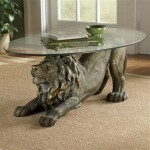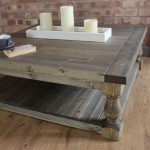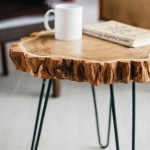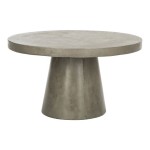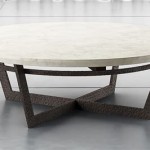What Causes A Glass Patio Table To Shatter When Turned Off?
The seemingly spontaneous shattering of a glass patio table after it has been exposed to heat, sometimes even after it appears to be cooling down, can be a perplexing and potentially hazardous event. Understanding the underlying causes requires an examination of the properties of glass, environmental factors, and the manufacturing processes involved in creating these outdoor furnishings. The phenomenon isn't as random as it appears; rather, it is often the culmination of several contributing factors that combine to exceed the structural integrity of the glass.
Tempered glass, the type most commonly used in patio furniture for its strength and resistance to breakage, undergoes a specific heat-treating process. This process involves heating the glass to a high temperature and then rapidly cooling it. This rapid cooling creates a state of tension within the glass, with the outer surfaces in compression and the interior in tension. This compression layer on the surface is what gives tempered glass its increased strength. When tempered glass breaks, it shatters into small, relatively harmless pieces instead of sharp, dangerous shards, which is a significant safety feature.
However, this very process also makes tempered glass susceptible to shattering under certain conditions. Minute imperfections present in the glass, often undetectable to the naked eye, become points of weakness under the internal stresses. These imperfections, combined with external stress factors, can lead to catastrophic failure. When these factors align, the glass can shatter with considerable force, even after the apparent source of heating has been removed.
Internal Flaws in the Glass
One of the primary contributors to the shattering of glass patio tables, even those “turned off” from direct heat exposure, is the presence of internal flaws within the glass itself. These flaws can originate during the manufacturing process, either through impurities in the raw materials or imperfections introduced during the heating and cooling stages. These flaws act as stress concentrators, meaning they amplify the stresses within the glass structure.
Nickel sulfide (NiS) inclusions are a common type of internal flaw that can cause spontaneous shattering. NiS forms when nickel-containing contaminants, often from stainless steel machinery used in glass manufacturing, combine with sulfur under high temperatures. These inclusions undergo a phase change over time, expanding slightly in volume. While this expansion is minuscule, it can exert significant pressure on the surrounding glass, particularly in tempered glass where internal stresses are already high. This expansion can take years to manifest, which explains why some glass tables may shatter long after being manufactured and installed. The expansion is accelerated by temperature fluctuations, which is why outdoor environments are particularly conducive to this type of failure.
Other types of internal flaws can include microscopic cracks, bubbles, or inconsistencies in the glass matrix. These imperfections may not be immediately problematic, but they weaken the overall structure and make the glass more vulnerable to external stressors. The tempering process, while strengthening the glass overall, can also exacerbate the impact of these flaws by placing them under increased tension.
External Stressors and Environmental Factors
External stressors play a crucial role in triggering the shattering of glass patio tables. While direct heat exposure is an obvious factor, other environmental elements can contribute significantly. These elements include temperature fluctuations, uneven support, and physical impacts, even seemingly minor ones. The combination of these stressors with the internal stresses inherent in tempered glass can create a perfect storm leading to catastrophic failure.
Temperature fluctuations, especially rapid changes, cause the glass to expand and contract. This expansion and contraction creates additional stress within the glass structure. If the table is exposed to direct sunlight for an extended period and then suddenly cools down, the differential contraction between the surface and the interior of the glass can exceed its tensile strength, leading to cracking or shattering. Even gradual temperature changes over the course of a day and night can contribute to fatigue over time.
Uneven support is another critical factor. If the table frame does not provide consistent and even support to the glass surface, certain areas will bear a disproportionate amount of weight. This uneven distribution of stress can create localized stress concentrations that make the glass more susceptible to cracking or shattering, especially when combined with temperature fluctuations or minor impacts. It's important to ensure that the glass is properly seated within the frame and that the frame itself is level and stable.
Physical impacts, even those that seem insignificant, can initiate or exacerbate existing flaws in the glass. A small chip or scratch on the edge of the glass, for example, can act as a stress concentrator, weakening the overall structure. Similarly, dropping an object onto the table or even accidentally bumping it with sufficient force can create microscopic cracks that propagate over time, eventually leading to a catastrophic failure. The tempered nature of the glass means it can withstand significant force applied evenly, but is vulnerable to focused force at a weak point.
The Role of Manufacturing and Installation
The quality of the glass manufacturing process and the proper installation of the table are also critical factors that influence its susceptibility to shattering. Substandard manufacturing processes, inadequate tempering, or improper handling during installation can all contribute to premature failure. Choosing tables from reputable manufacturers and ensuring proper assembly and support are crucial steps in preventing unexpected shattering.
If the glass has not been properly tempered, it will not have the desired compressive stresses on the surface, making it weaker and more prone to breakage. Inadequate tempering can result from issues with the heating or cooling processes, such as uneven temperature distribution or incorrect cooling rates. Reputable manufacturers adhere to strict quality control standards to ensure that their tempered glass meets the required strength specifications.
The installation process is equally important. If the glass is not properly seated within the frame or if the frame itself is not level and stable, the glass will be subjected to uneven stress. Improper installation can also introduce small chips or cracks that weaken the glass structure. It is essential to follow the manufacturer's instructions carefully during installation and to ensure that all components are properly aligned and secured. Using shims to level the table frame on uneven surfaces can help to distribute weight evenly and reduce stress on the glass.
Furthermore, the design of the table itself can influence its susceptibility to shattering. Tables with large, unsupported glass surfaces are inherently more vulnerable than those with smaller, more supported surfaces. Tables with intricate frame designs that create localized stress points may also be more prone to failure. Choosing a table with a well-designed frame and a reasonable glass surface area can help to minimize the risk of shattering. The type of supports used to attach the glass to the frame is also crucial. Materials that expand and contract at different rates than the glass can contribute to stress over time.
Ultimately, understanding the complex interplay of internal flaws, external stressors, and manufacturing processes is essential for minimizing the risk of glass patio table shattering. While spontaneous shattering can sometimes occur despite all precautions, careful selection of furniture, proper installation, and mindful use can significantly reduce the likelihood of this potentially dangerous event. Regular inspection of the glass surface for chips, scratches, or other signs of damage can also help to identify potential problems early on and prevent catastrophic failure.

5 Tips To Stop Your Glass Patio Table From Shattering Posh Living

5 Tips To Stop Your Glass Patio Table From Shattering Posh Living

Mum Issues Warning After Glass Garden Table Shatters Leaving Her Patio Covered In Dangerous Shards The Sun

5 Tips To Stop Your Glass Patio Table From Shattering Posh Living

Asda Glass Patio Table Exploded Into A Million Pieces When Left In The Sun Daily Mail

Mum Issues Warning After Glass Garden Table Shatters Leaving Her Patio Covered In Dangerous Shards The Irish Sun

5 Tips To Stop Your Glass Patio Table From Shattering Posh Living

Asda Glass Tables Explodes As Children Sat Around It Daily Mail

Asda Glass Patio Table Exploded Into A Million Pieces When Left In The Sun Daily Mail

Outdoor Tables Spontaneously Explode Glass Popping Like Popcorn Stuff
Related Posts

